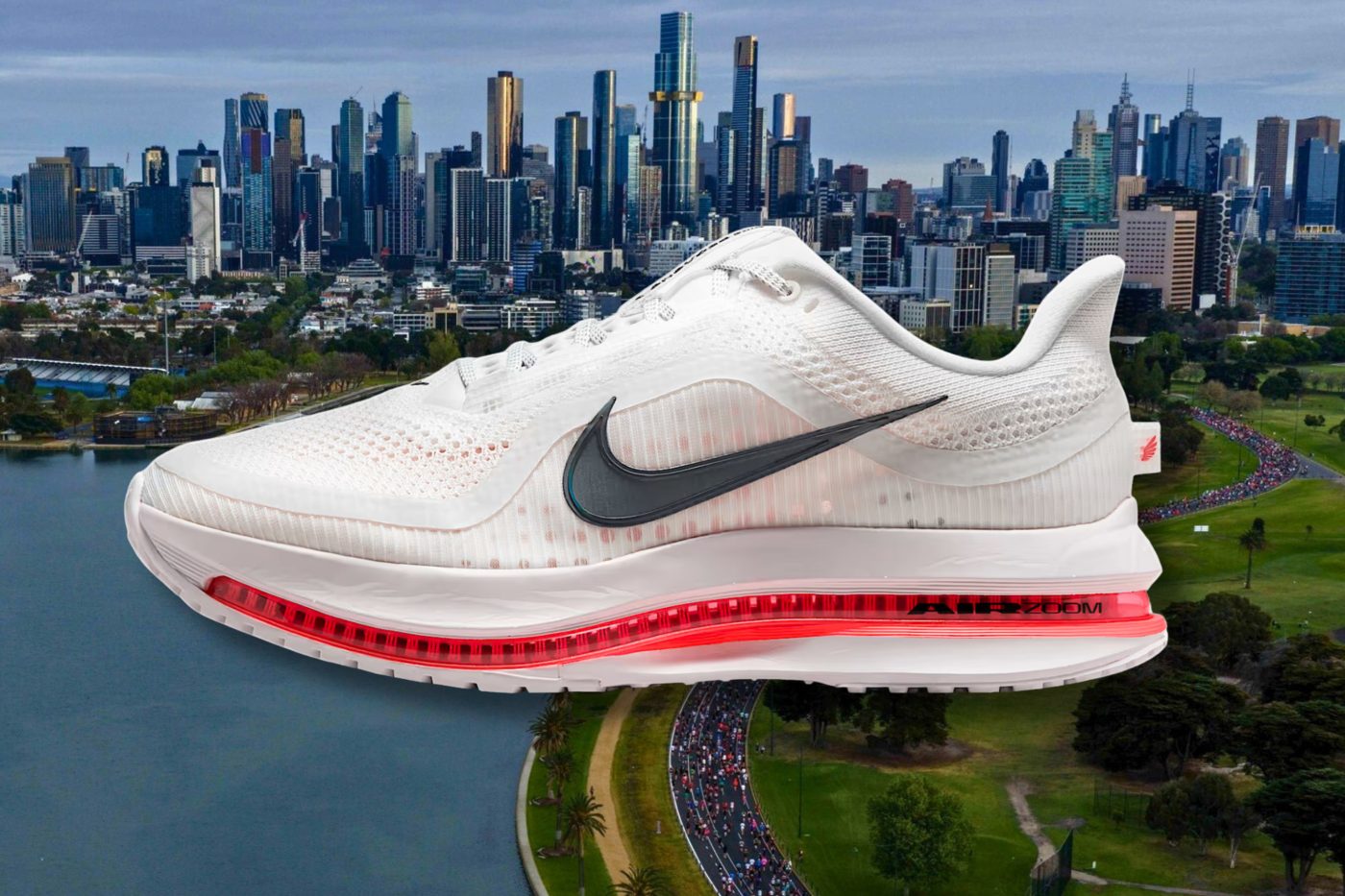- Nike has introduced a simplified “three-lane” system for runners: Responsive (Pegasus), Maximum (Vomero), and Supportive (Structure).
- Each franchise offers multiple tiers, like Plus and Premium, to suit varying needs and budgets.
- Running culture in Australia is booming, with Nike cementing itself at the heart of this global fitness renaissance.
Who would have thought that pounding the pavement with thousands of other people in short shorts and neon running shoes would be my idea of a good time? I certainly didn’t. Yet there I was, rolling into the start line of my first marathon, chasing a PB with nervous energy and pumped full of enough carbohydrate-laced gels to run through walls, ready to hit a PB.
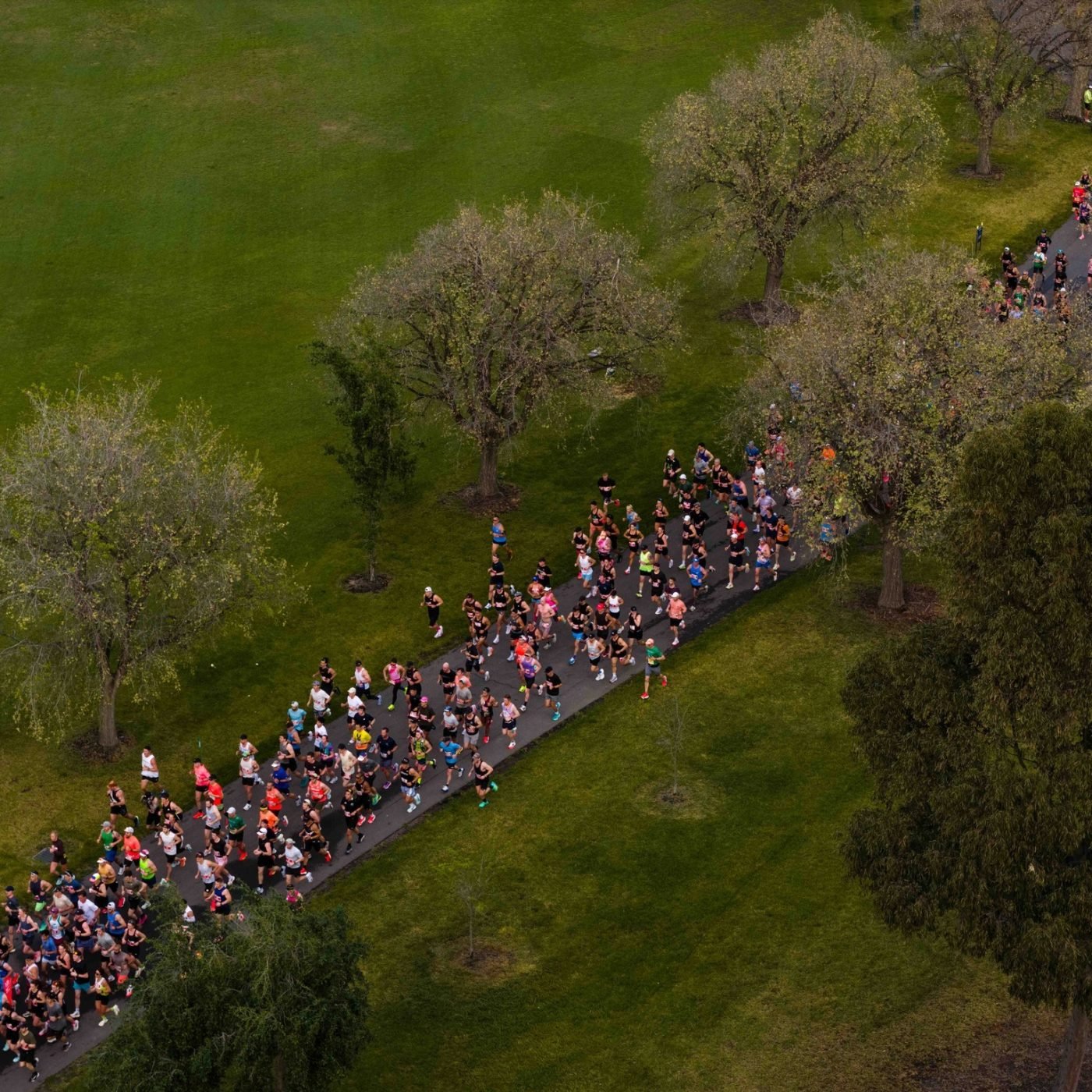
Of course, the way that running culture has seemingly erupted in recent years, I wasn’t alone. I was surrounded by like-minded people who would treat the next four or so hours as their own idea of a mental health kick.
Alphafly 3s, Vomero 18s and Pegasus Premiums were on every other foot, donning one of the most iconic symbols in running culture across the side. Running is Nike’s business… and business is good.
Running Is Nike’s Business
Australia has become the spiritual home of this running renaissance. From Bondi’s sunrise crews to the Sunday stampede around The Tan, we’ve quietly turned into the running capital of the world.
And with the Nike Melbourne Marathon Festival celebrating another year last weekend, Nike has landed at the perfect time to give our over-caffeinated, Strava-obsessed community the essential starter kit it deserves.
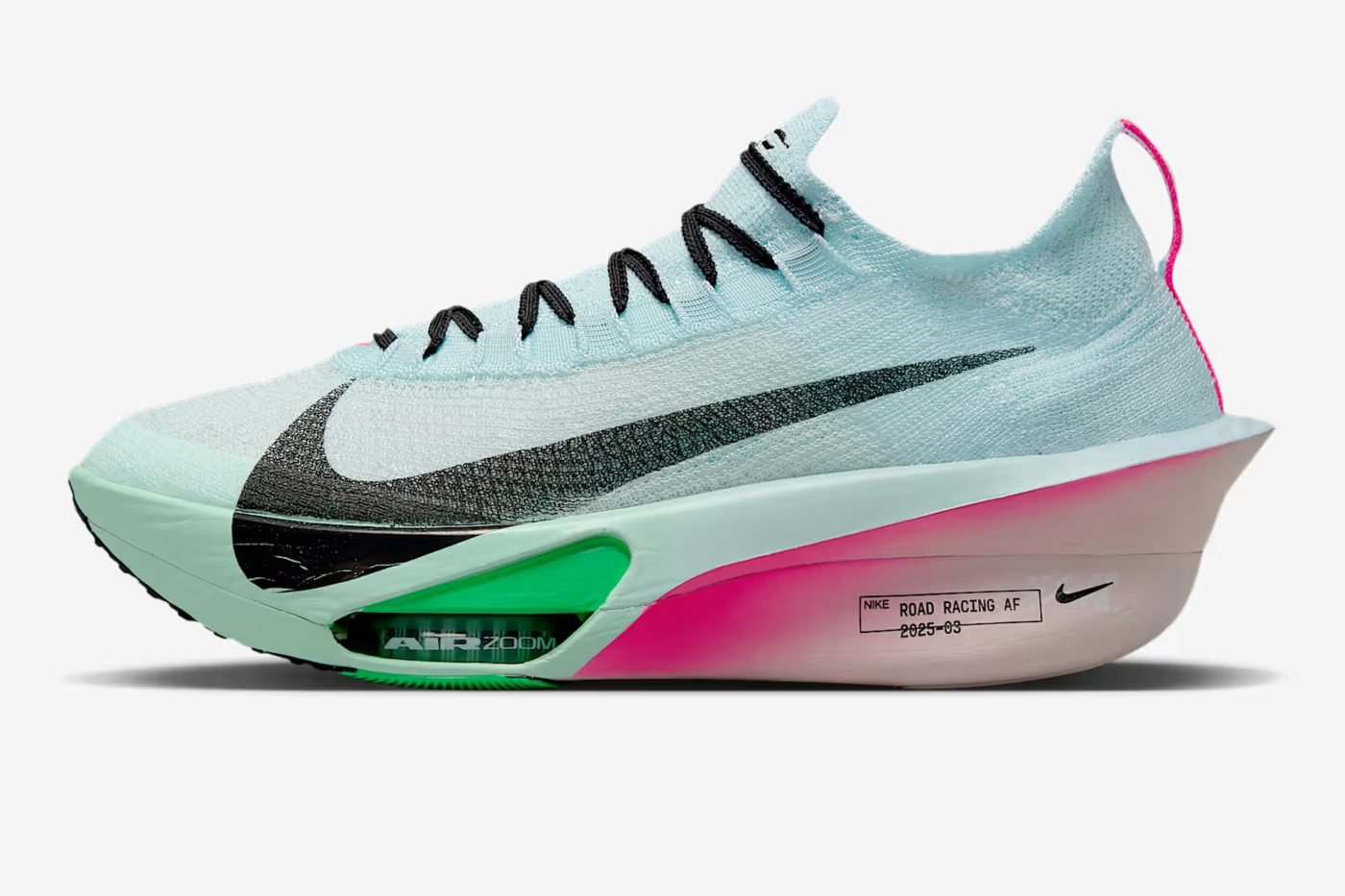
“Running is such a hard activity, which I think a lot of people are finding out, but it’s such a simple activity as well,” Nike EKIN, Michael Osten told DMARGE.
“I think the purity of just lacing up a pair of shoes means the level or the entry barrier is so much easier to get into running than cycling or even going to the gym. It’s become this social phenomenon, as well. I think there are so many people who are enjoying meeting with their friends, going for an easy run. There’s a real purity about running.”
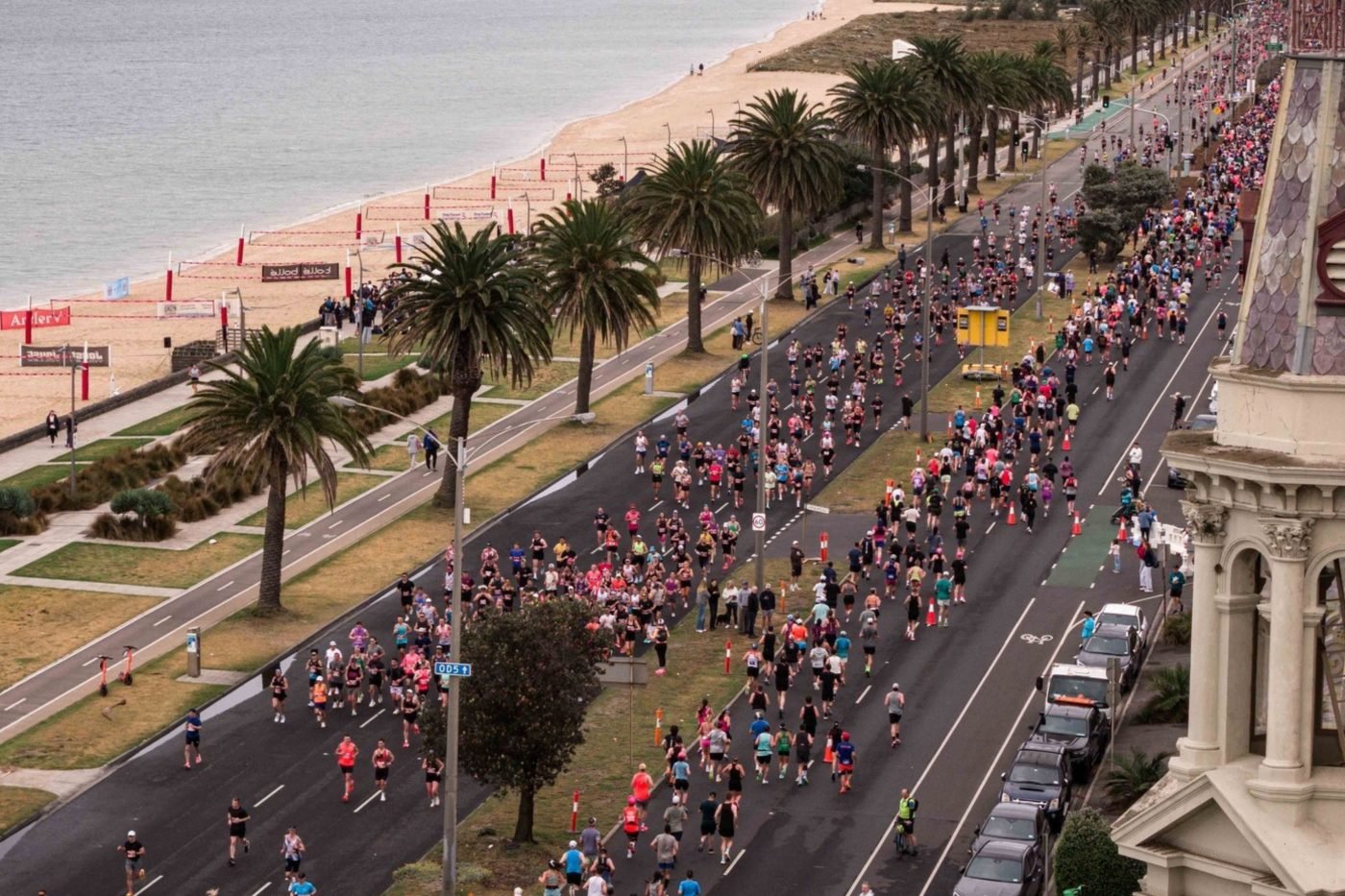
For sixty years, the brand has been refining what it feels like to lace up, and now they’ve simplified things to make it even easier for you to find your fit. Three lanes. Three ways to run. One clear way to match the shoe that’s perfectly suited to you.
The Nike Road Running Lineup Explained
The new Nike Road Running categories are so straightforward you could explain them between hill repeats: responsive cushioning in the Pegasus franchise for energy and snap, maximum cushioning in the Vomero franchise for plush comfort that takes the sting out of the road, and supportive cushioning in the Structure franchise for guidance that keeps your ankles and knees in check.
“Not all runners are the same, and not all runs are the same.”
Michael Osten , Nike EKIN
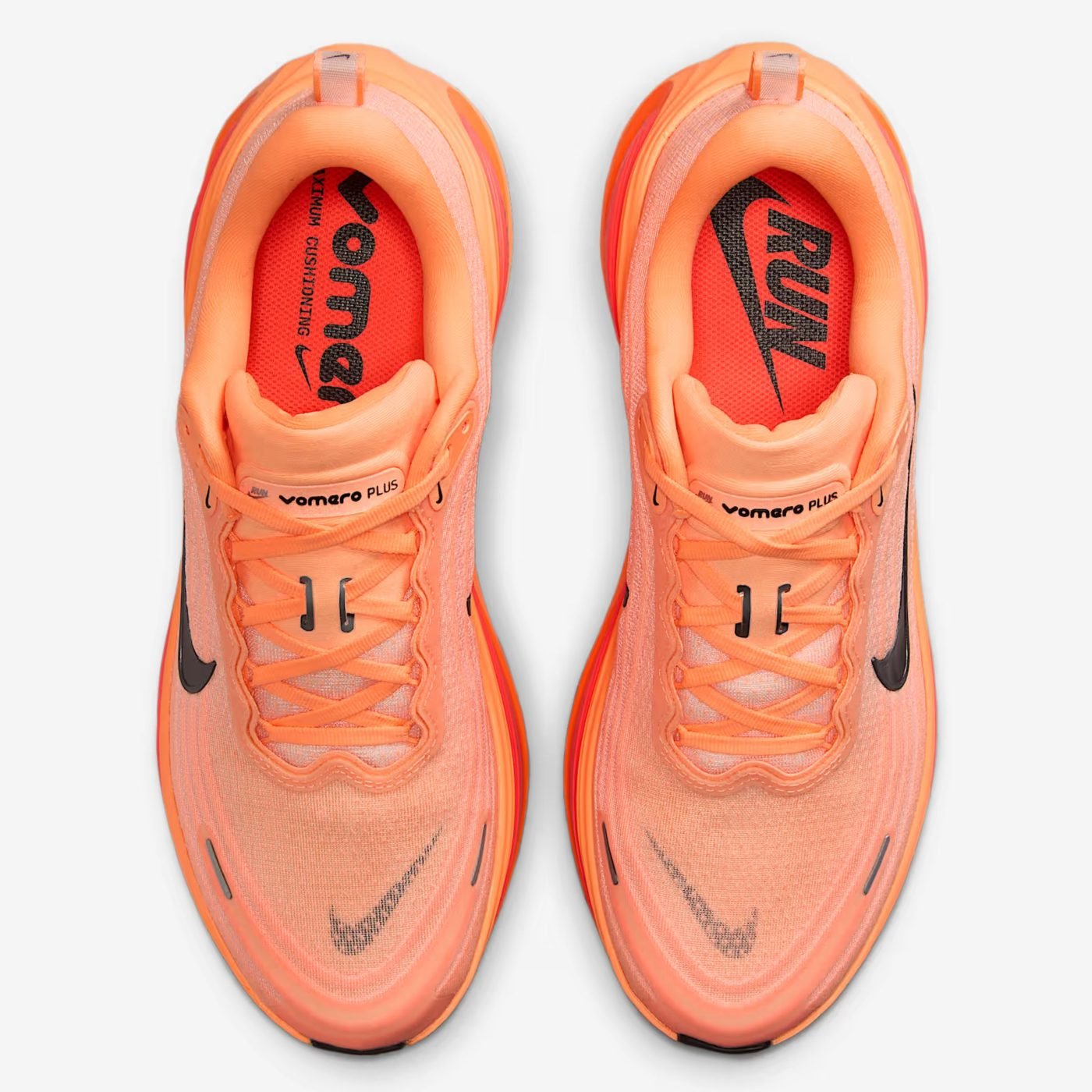
For all the community and culture around running today, the shoe you choose is still largely individual and personal. Each franchise offers three different silhouettes with a different mix of Nike innovations and price points, providing a variety of options for all runners.
Each category has an “Icon” model, like the Pegasus 41 or Vomero 18, and “Plus” and “Premium” silhouettes that offer a combination of technologies for an elevated experience.
I’ve got glass ankles, so I’m always seeking comfort and stability whenever I run. It’s why the Structure and Vomero get a fair workout in my rotation. But I’ll admit that the Pegasus 41’s responsiveness has stolen plenty of my weekday kilometres in recent weeks as I prepare for race-day form.
Nike Pegasus 41: The Responsive Workhorse
Take the Pegasus 41. It was the shoe that quietly carried me from lazy 5Ks after work to 20K weekend-long runs. So smooth was the ride that I still credit it with teaching my legs how to keep going even when everything was telling me they wanted to quit.
“The Pegasus 41 is what we call the cornerstone of Nike Running,” Osto continued. “It’s a really great starting point. And this lives in our responsive cushioning silo. It’s designed to be really durable, and it’s quite soft. It’s also fast or responsive enough to go fast as you develop your fitness.”
“If you want to push out a 5K and have a little bit of speed in that run, the Peg 41, with your React X midsole and Zoom Air bags, helps make you feel snappier, and go a little bit faster.”
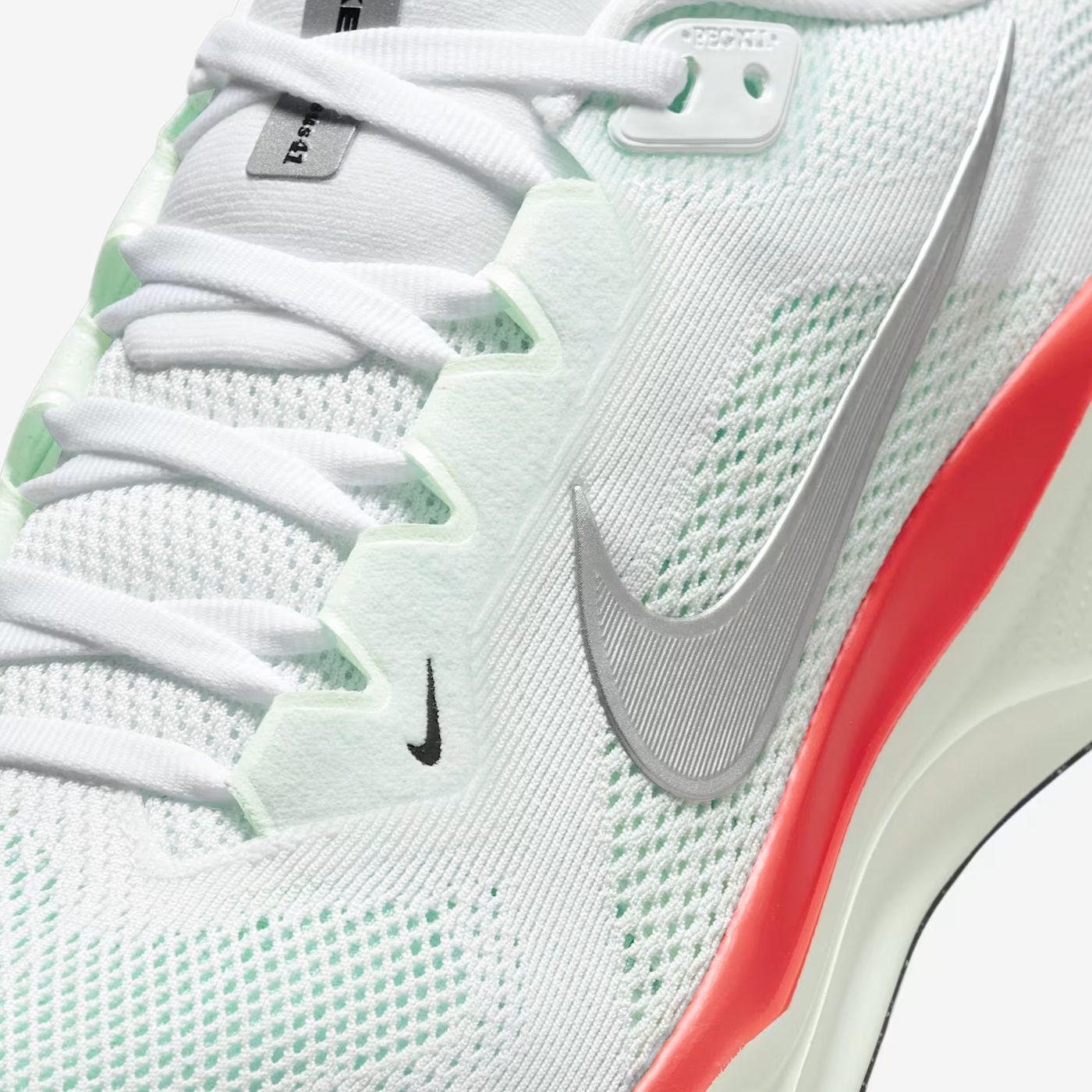
Nike says its new ReactX foam midsole is 13% more responsive than the old version in the Peg 40, and the numbers line up with reality. The shoe just rolls. Add an engineered mesh upper that lets your feet breathe and a midfoot system that hugs without strangling, and you’ve got the most versatile pair in my rotation.
Nike Pegasus Premium: Race-Day Energy, Every Run
Then came the Pegasus Premium, which I’ll say was the first shoe in my collection that felt like a race shoe, bright orange racing stripe and all.
Springy, powerful, unapologetically responsive, it debuted Nike’s sculpted, visible full-length Air Zoom unit. You can feel the design carry your stride from heel to toe, handing back energy like a volunteer at a marathon.
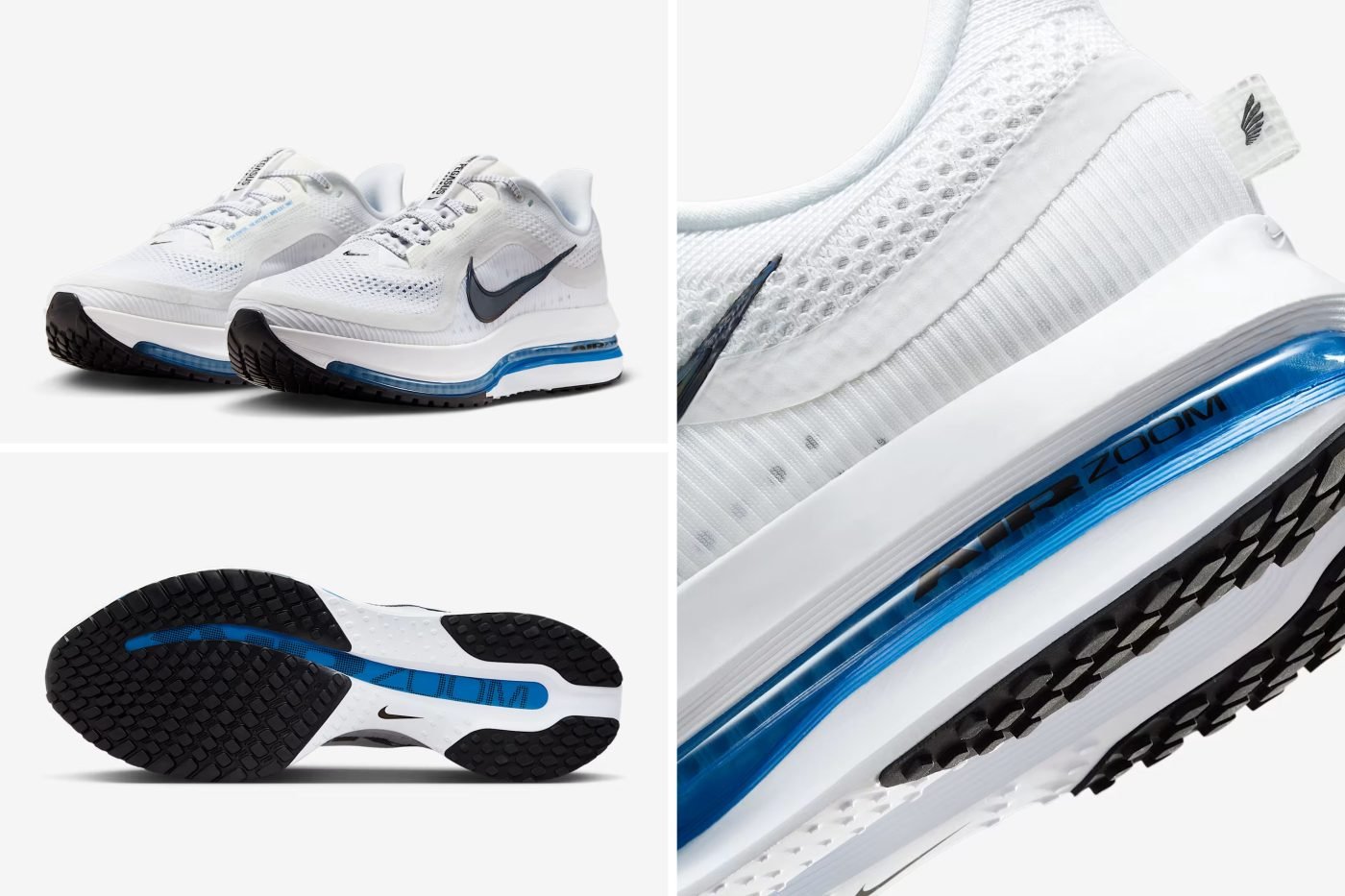
Even with 200 kilometres on the clock, mine still bounce like they’re fresh out of the box. This is Nike Air doing what only Nike Air can do: turning ordinary training days into something close to special.
Nike Vomero 18: Maximum Cushioning For Long Runs
The Vomero 18 is the other end of the spectrum. Maximum cushioning dialled all the way up. Pulling them on feels like slumping into a favourite armchair with a cup of tea after a long day.
“For a lot of runners, comfort is performance.”
Michael Osten, Nike EKIN
“We’ve gone up to a 46-millimetre stack height in the heel, which means more cushioning under your foot,” Osto explained.
“There’s also a big rocker built into the sole, so think of it like sitting back in a rocking chair – comfortable, supportive, and designed to keep you moving smoothly. The goal is to make rolling through your gait cycle as easy as possible. The Vomero is all about maximising cushioning underfoot.”
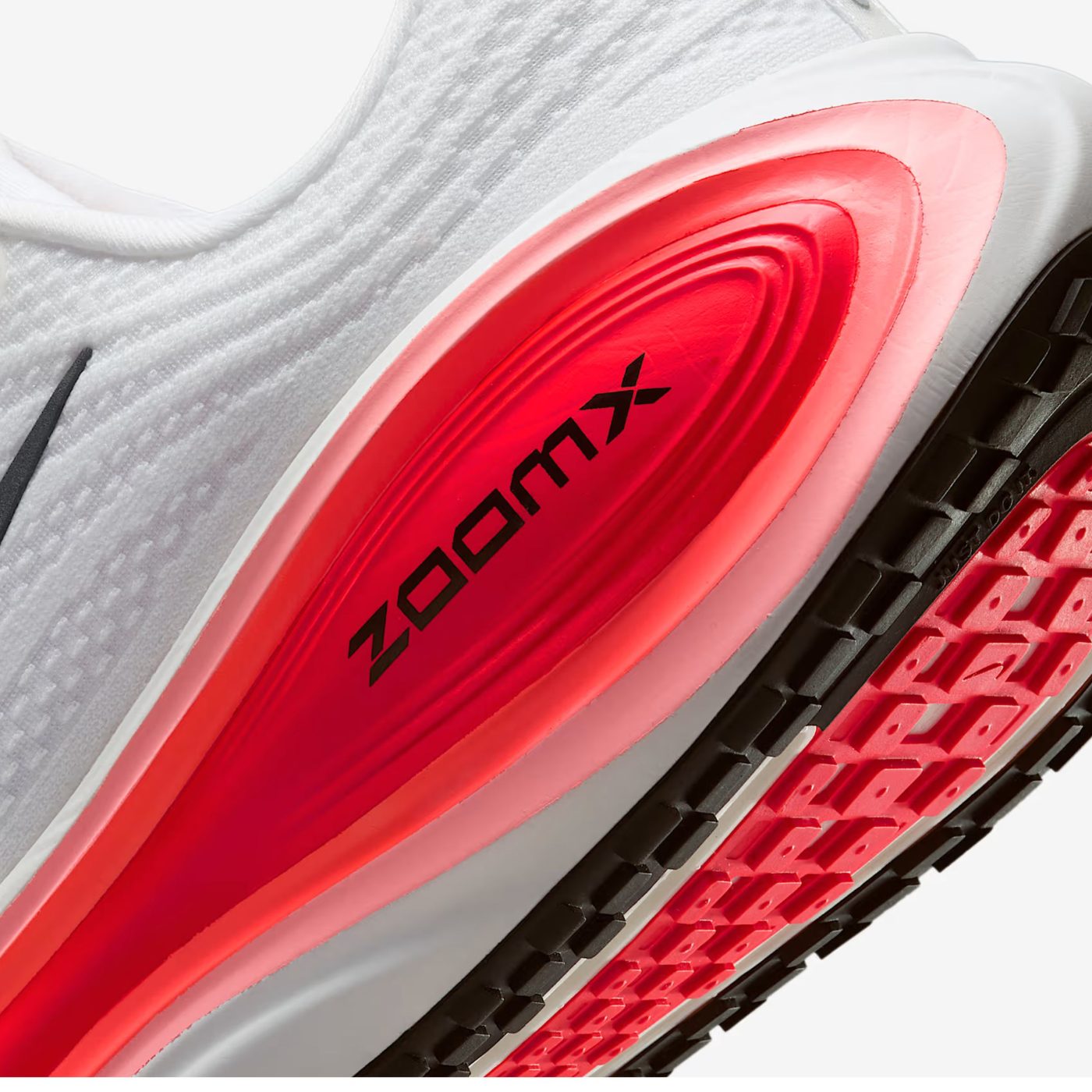
The plush tongue, soft lining and high-stack rocker geometry remind you that not every run has to hurt. ZoomX keeps the ride light and propulsive, while ReactX keeps it stable and a little more sustainable.
I lean on them for recovery runs, aerobic slogs and mornings when the couch almost won the battle. They’re the shoes that make you forget the asphalt even exists.
Nike Structure: Supportive Cushioning For Stability
Rounding out the lineup is the Structure franchise. The supportive option for runners who need a little extra guidance.
Stability used to mean clunky. Now it means subtle steering that helps you finish a run without your knees asking for an ice bath. With my ankles, this is the lane I drift into often, and the fact that it now sits clearly alongside Responsive and Maximum cushioning makes the whole system click into place.
The Future Of Nike Running Innovation
This is Nike’s new frontier of innovation, but it’s also a throwback to how running shoes used to be sold: simple, clear and built on what runners actually need.
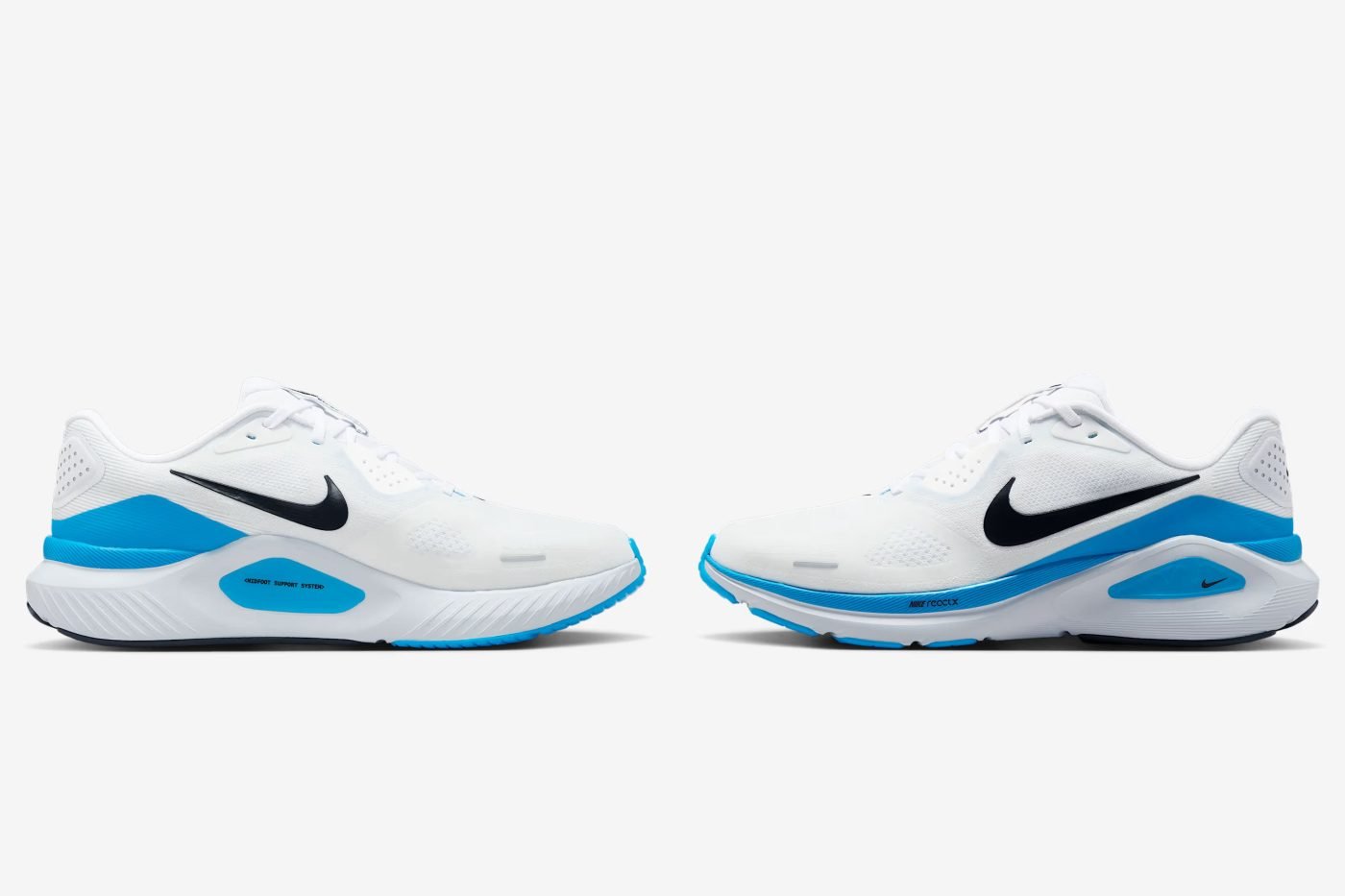
Sixty years of design heritage, athlete co-creation and Nike Sport Research Lab data have given Nike the timely edge ahead of the chasing pack for innovation and product performance, delivering a system that makes shoe choice easier.
“We always want to make sure we’re offering a really broad suite of running shoes, because you know what one runner finds comfortable and what another runner finds comfortable, and where they are on their running journey, is so different,” Osto told DMARGE.
“So we want to make sure that we’re not giving a one-size-fits-all solution to runners and offering diversity. I think that is one of our key strengths.”
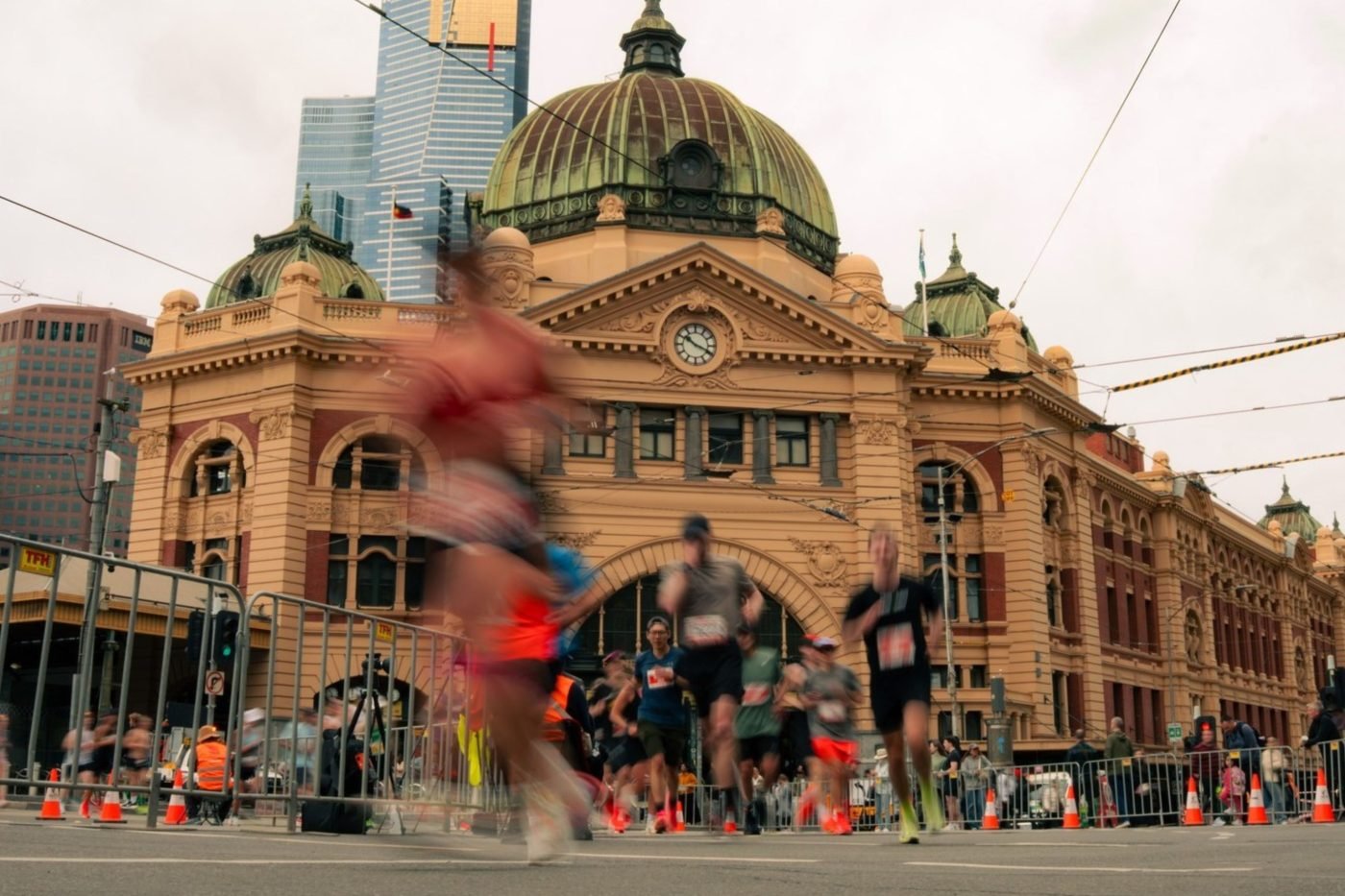
Choose your lane, lace up and get moving. That’s the point. Nike has stripped away the noise and made the decision almost an intuitive response, democratising the whole process so you don’t have to be an elite athlete to know which lane to run in. “If you have a body, you’re an athlete,” as Bill Bowerman would say.
Running might feel like the most communal sport in the world right now, but the shoes on your feet will always be personal. And in a season where every second café line is filled with runners comparing splits, it helps to know exactly where you fit in. Responsive, Maximum or Supportive. Pick your lane and get on with it.
